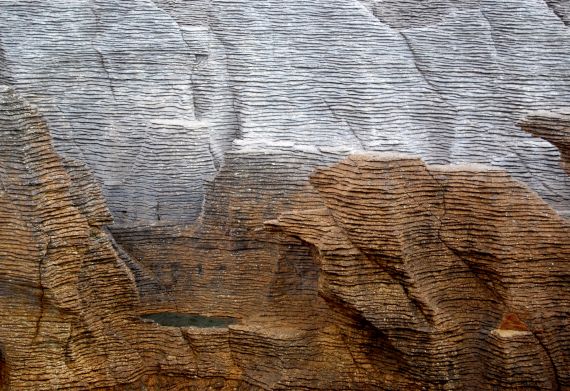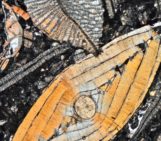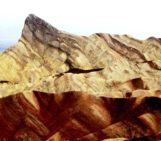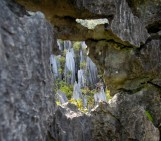These are the Pancake Rocks of Punakaiki, on the west coast of New Zealand. They are made of limestone that was deposited as calcifying organisms fell to their fate on the sea floor about 30 million years ago. Since then, the limestone has been uplifted, exposed, and eroded by the wind and the sea. Each of the limestone layers are separated by a thin sheet of mudstone in an arrangement known as stylobedding.
Since mudstone is made up of fine, weakly-bonded clay minerals, it is much less durable, so these layers erode faster than their limestone counterpart. This preferential weathering is what makes this formation look like enormous stacks of American pancakes:

“Lime Pancakes” by Laura Kerber, distributed by the EGU under a Creative Commons licence.
Each “pancake” is about 5 centimetres thick. Still close to the sea, these rocks are regularly wetted by the water as it meets them. The rocks you see here are close to a blowhole, and water has pooled on one of the stacks – it’s not quite maple syrup, but it looks the part!
Imaggeo is the EGU’s open access geosciences image repository. A new and improved Imaggeo site will be launching soon, so you will be able to peruse an even better database of visually stunning geoscience images. Photos uploaded to Imaggeo can be used by scientists, the press and the public provided the original author is credited. Photographers also retain full rights of use, as Imaggeo images are licensed and distributed by the EGU under a Creative Commons licence. You can submit your photos here.



